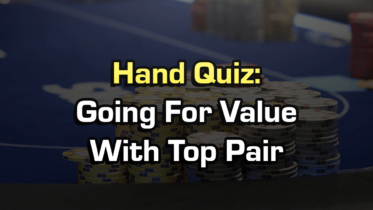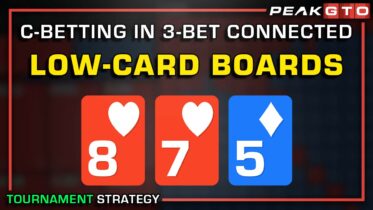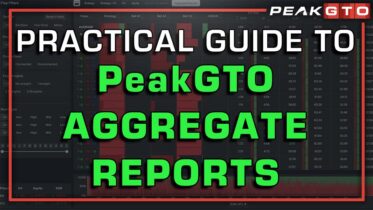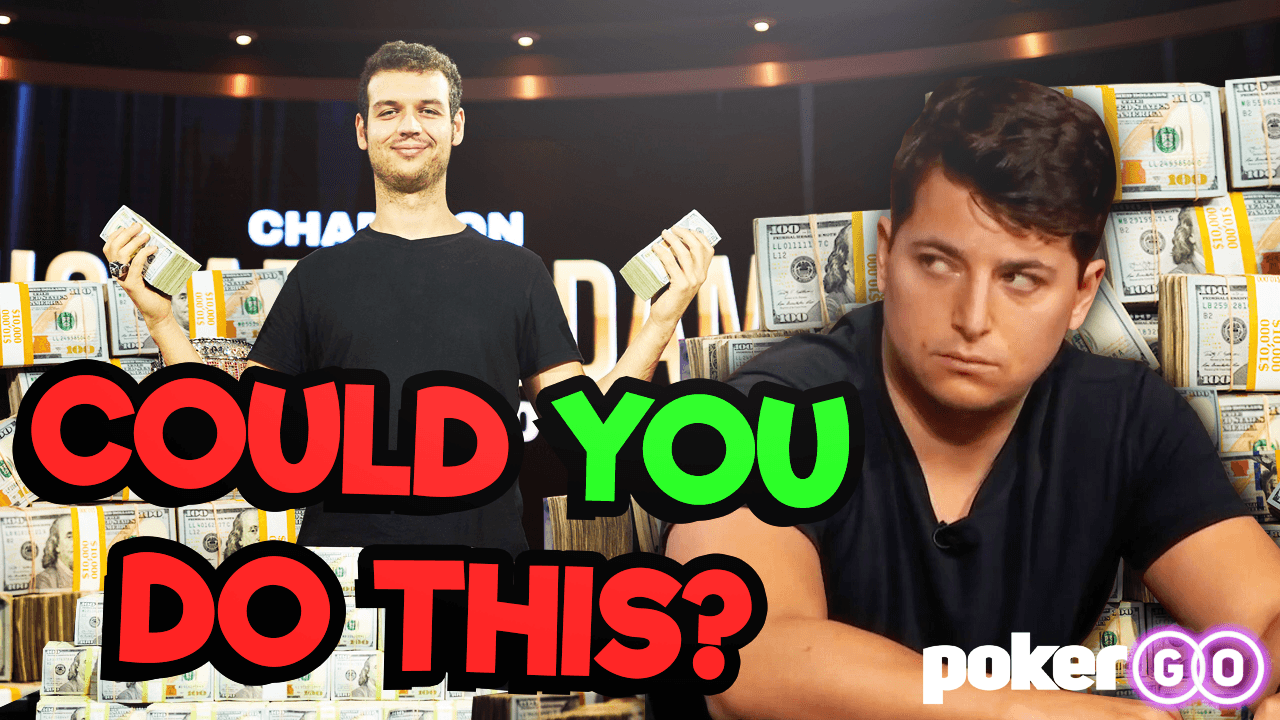A common mistake amongst novice poker players is failing to pursue value from hands on later streets. When you have top pair, especially with a good kicker, you need to extract value and overcome your fear of getting raised or bluffed off the best hand. If you get raised when betting for value, you can always fold! As with any spot in poker, studying and preparing for common spots will take you far.
Scenario: You are six-handed in a $1,000 buy-in tournament. You have 7,000,000 in chips and the blinds are at 50,000-100,000 when the under-the-gun player raises to 200,000. The hijack calls and it folds to you in the cutoff holding A♠Q♣.
Playing Preflop With Ace-Queen
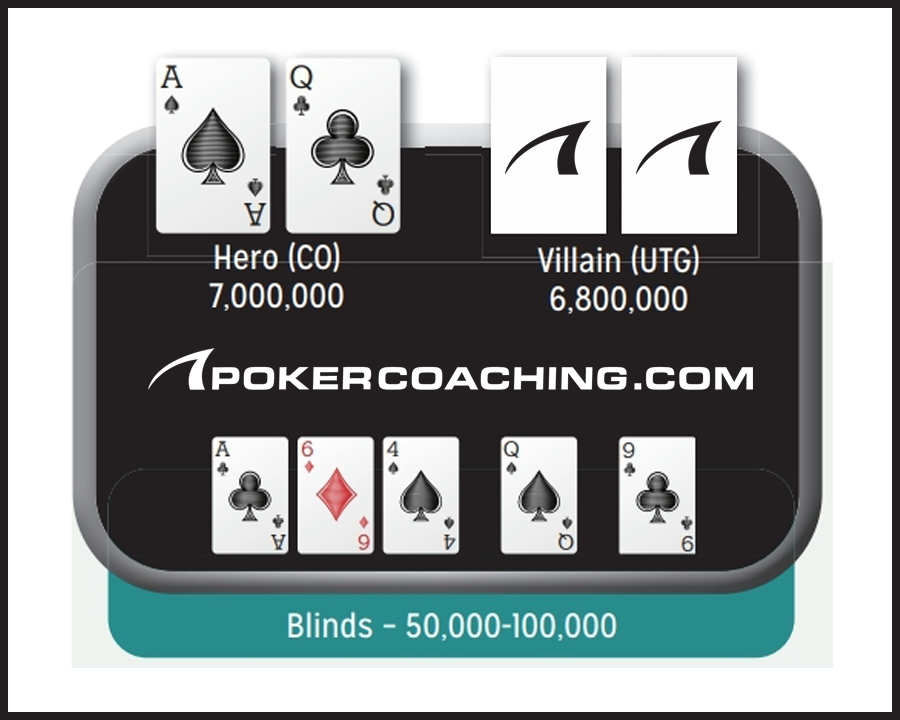
Considering A Preflop Raise
There are two reasonable plays, calling or re-raising for 900,000. With strong but non-premium high card hands like A-Q, you want to force opponents out of the pot or at the least make it heads-up. Reraising small to 600,000 gives your opponents excellent pot odds to stay in, which fails to discourage calls and often results in a multi-way pot.
That said, with decently strong hands like A-Q offsuit that I do not want to have to fold to a four-bet, I often call when I think the UTG player’s range is strong and instead three-bet slightly weaker hands like A-J offsuit and K-Q offsuit as my bluffs, assuming I even want to have preflop bluffs.
Action: You elect to call and it goes three ways to the flop. The flop comes A♣-6♦-4♠ and both opponents check.
Playing The Flop With Top Pair
The Pot: 750,000
The Board: A♣-6♦-4♠
Effective Stack: 68 Big Blinds Effective
Playing Top Pair Multi-Way
After both opponents check the flop, it is highly likely you have the best hand. While it is brutal when you bet and get check-raised, it is unlikely that will happen on this board where you have lots of sets and two pairs. Betting for a small size entices your opponents to call with hands that are drawing thin and helps build the pot for bigger bets on the turn and river.
Action: You bet 300,000 and only the UTG player calls. The turn is the Q♠ and your opponent checks.
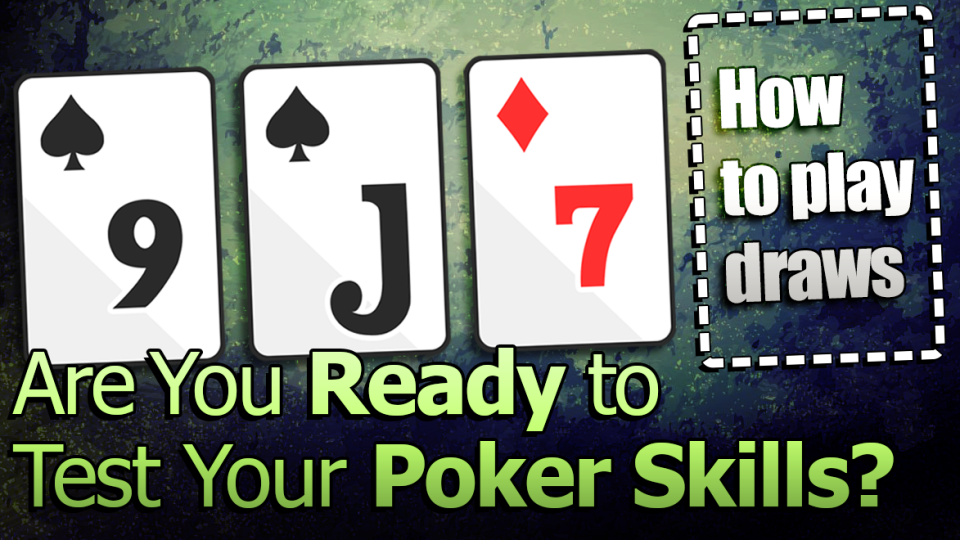
Are you a pro at playing draws? Take the quiz to find out
Playing The Turn With Top Two Pair
The Pot: 1,350,000
The Board: A♣-6♦-4♠-Q♠
Effective Stack: 65 Big Blinds Effective
What Your Opponent’s Check-Raise Means
By check-calling the flop, your opponent is pretty clearly representing an ace, six, four, or underpair. If your opponent has an underpair, do you think they would call any reasonable bet on this turn? Probably not, making it imperative that you focus on extracting value from the worse top pairs.
Betting for 1,500,000 is probably too much as it could induce folds from hands like A-2 suited or K-K. Betting 1,000,000, while slightly less, is more apt to get called by a wider range of hands you beat. While you certainly want to get as many chips in as possible, it is important to acknowledge your opponent’s range when determining your bet size.
Action: You bet 1,000,000 and your opponent calls. The river is the 9♣ and your opponent checks.
Playing The River With Top Two Pair
The Pot: 3,350,000
The Board: A♣-6♦-4♠-Q♠-9♣
Effective Stack: 56 Big Blinds Effective
Extracting Value With Two Pair
Again, you should ask yourself which hands you are trying to get called by. Most underpairs will fold to any bet, so your main concern should be extracting value from worse aces. It is doubtful your opponent will find a hero call if you shove, making 1,200,000 or 2,400,000 your best options. If your opponent in fact has an ace, they will usually find a call when faced with a 2,400,000 bet, making it the ideal amount.
Action: You bet 2,400,000 and your opponent folds pocket kings face-up.
Interested in taking your game to the next level and learning from REAL hands from REAL pros? Be sure to check out the hundreds of hand quizzes you can find right here on PokerCoaching.com.
